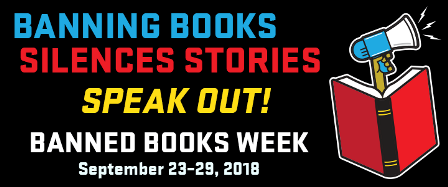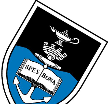University of Cape Town Libraries has announced that it will on the 21 September be launching International Banned Books Week at an event. In its announcement UCT Libraries noted that “Under Apartheid, the Publications Act banned books, films, music and posters. Libraries were forced to remove and restrict access to the ‘objectionable liberature’ within their collections. In Acknowledgment of International Banned Books Week, we have created an exhibition showcasing materials held at UCT libraries that were banned and subsequently unbanned under the act.” The letter below is from former UCT librarian William Daniels to his former colleagues in response to the announcement of this initiative. - PW
Dear Colleagues,
I commend UCT Libraries for daring to mount an exhibition of materials that were banned under apartheid, even as the censorship of art continues within its own walls.
As you know, Breyten Breytenbach's painting Hovering Dog, among others, was removed from the Chancellor Oppenheimer Library, and Mikhael Subotzky's award-winning Pollsmoor photographs were removed from the Law Library. Just steps from the library's entrance, Diane Victor's drawing Pasiphaë, which had been boarded up for several years, was recently removed, without explanation. And, after being covered up with cloth for over three years, Willie Bester's sculpture Sarah Baartman has also now been removed from the Chancellor Oppenheimer Library, with no word as to whether it will ever be returned to permanent display after its brief forthcoming exhibition at the Ritchie Gallery. Dozens of paintings, photographs, drawings, and sculptures have likewise been removed from other buildings on campus.
The Libraries failed to uphold the artists' rights throughout these events, as did the Library and Information Association of South Africa, which only issued a statement on the suppression of artworks at UCT in August 2018. However, we now know that the former University Librarian did, in fact, recognize censorship as censorship and as violations of the LIASA Code of Ethics and Conduct: she wrote the attached statement opposing censorship and defending the Libraries' collections, and requested that her stance be made public, which the former Vice-Chancellor refused to do.
In order for the Libraries' Banned Books Exhibition to have any credibility, and for it to remain free of a staggering degree of hypocrisy, it must present an honest account of the ongoing censorship of art inside the Libraries and elsewhere in the University by including images of all of the suppressed (and recently destroyed) works of art (a list of them is available here), and by posting the "Statement by LIASA on University of Cape Town Censorship" as well as Gwenda Thomas's statement on the censorship of Wille Bester's Sarah Baartman that she wanted to be made public (see below).
Sincerely,
William
Text of letter from Gwenda Thomas, Executive Director: Libraries, UCT, to Vice-Chancellor Max Price, 23 January 2018
Dear Dr Price
SARAH BAARTMAN SCULPTURE: POSITION OF THE UNIVERSITY LIBRARIAN
Since receiving your letter dated 20 January 2018, I have reflected on the response of the VCMag and the WOAC that I am required, in my capacity as Executive Director and University Librarian, to arrange for or instruct university staff to place the coverings back on the Sarah Baartman sculpture.
In my executive function as University Librarian and professional capacity as a Librarian and a member of the Library and Information Association of South Africa (LIASA), I am the champion, steward and curator for the UCT Libraries which are both dedicated and committed to serve all the scholarly information needs of the campus community. This duty includes protecting and stewarding collections, including works of art on display, in the UCT Libraries.
On reflection that the VCMag wants the University Librarian to arrange for the coverings to be placed back on the Sarah Baartman sculpture so that the engagement process can continue, my response is that this constitutes an unsatisfactory resolution. It places the reputation of both the institution and Libraries at risk by compromising the University Librarian on grounds of professional ethics and the Libraries as a place of censorship in an institution of learning – both of which fly in the face of freedom of expression, moral rights of artists and the Librarian’s professional code of ethics.
As a reminder, the university’s statement of values UCT commits to intellectual honesty, rigour in debate, openness to alternative ideas and respect for other views, ways of being, beliefs and opinions. As a university community we are bound to promote and protect academic freedom and freedom of expression, including the creation of spaces for contestation of ideas.
Guided by the university’s statement of values and LIASA, the UCT Libraries in particular are committed to academic freedom, openness to alternative ideas, respect for other views, the creation of spaces for the contestation of ideas and adhere to the principles and guidelines of the profession’s Code of Conduct and Ethics, which includes:
- Members should ensure the free flow of information, freedom of speech and freedom of expression and the right of access to information.
- Members should not exercise censorship, but facilitate and allow for the free and equal access to all sources of information.
- Members should support intellectual freedom.
As a member of the professional library association and a practicing Librarian for 37 years, I sign off annually that I am bound by and committed to the principles of the profession’s Code of Conduct and Ethics. In fulfilling my professional ethical obligations and duty to protect and steward the UCT Libraries collections and works of art, I am taking a principled stand that, as University Librarian, neither I nor any Library staff member, will undertake to place the coverings back on the Sarah Baartman sculpture.
Whilst I have deep appreciation for the process of engagement that WOAC is undertaking around the display of artwork on the UCT campus, the reality is that its set of plans and work in progress remains invisible to both the university community and broader public. This is resulting in assumptions that nothing is happening and individuals are taking matters into their own hands which, in turn, increases the risk to institutional and individual reputations. The urgency for the WOAC to communicate and implement its set of plans for engagement in the university community is paramount and, which only the Vice-Chancellor has the executive influence to achieve.
As Executive Director and University Librarian at the University of Cape Town, my professional dedication and commitment to the protection and stewardship of the library resources remains my first duty and obligation.
In the light of the protracted period that the Sarah Baartman has been covered (we are entering the 4th year) in the University Libraries, it has reached a point where the University Librarian’s position of principle regarding the covering of the Sarah Baartman sculpture needs to be publicly made known.
I am available and will work with you and the executive in any way I can to bring this issue of the Sarah Baartman sculpture to resolution.
In closing, I again implore the paramount urgency for the WOAC to communicate and implement its set of plans for engagement in the university community, and is a matter that only the Vice-Chancellor has the executive influence to unlock.
Yours sincerely,
Gwenda Thomas
Executive Director: Libraries
ENDS


